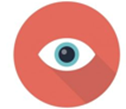Predictions: Three Top Insurance Technology Trends for 2021
Predictions: Three Top Insurance Technology Trends for 2021


Love how insurance technology trends suddenly hit fast-forward in 2020?
Just wait until you see the sequel.
Over the past year, P&C insurers have been slammed with more than $110 billion in losses from COVID-19 related claims and reduced premium volumes.
And consumer adoption of digital channels for buying and managing coverage has accelerated five years in just a matter of months—leaving insurers with flat-footed technology stacks scrambling to catch up.
Yet even as the industry continues to respond to the “cluster fun” unleashed during its year of living dangerously, insurers would be wise to keep an eye on three technology trends that will gain a whole new urgency in the year ahead.

Friend or Faux? Fraud Detection Goes Fast and Frictionless
Today, 18% of claims now include some element of fraud, up from the average 10% seen over the last decade, according to Guidewire partner FRISS. Seeing sharp rises in the past year: staged accidents, vehicle theft, procedure billing, phantom services, and faked accidents occurring at home.
At the same time, consumers doing legitimate business via digital channels are increasingly impatient with even the slightest delay on a quote or approval on a claim.
As a result, look for more insurers to embrace AI, machine learning, and analytics (specifically behavioral analytics) to assess fraud risk while simultaneously reducing friction for trusted, but increasingly fickle, customers.
Case in point: Guidewire's insurance platform. Our built-in capabilities combined with anti-fraud solutions from Shift Technology, Clara, FRISS, and other providers combine AI and machine learning with out-of-the-box business rules to accomplish two objectives. Provide straight-through claims processing for meritorious claims by automating fraud scoring in real time, and support for detecting and investigating fraudulent claims.
With high hit rates (Shift Technology’s fraud detection model delivers a 75% hit rate, for example), these integrated solutions deliver rich, accurate, real-time fraud scoring that is central to disrupting fraud while delivering fast, friendly customer experiences at every
digital touchpoint.

Personalized and Proactive Coverage Takes Center Stage
Blame it on digital-first brands like Netflix, Amazon, Google, or any brand you like. The fact is that today's most coveted consumers have come to expect personalized and proactive interactions from every company with which they transact, including insurers.
In the months ahead, this will increasingly mean deployment of automated, conversational AI-based services that make shopping for policies as easy as saying, "Hey, Alexa," and filing a claim as simple as capturing images with a mobile phone. It'll also mean the growing use of big data and predictive analytics to move from "protection-based" coverage to "engagement-based" models designed to save customers time, money, and energy on an ongoing basis.
Just look at Aviva, Hippo, and others that leverage home-based IoT devices to monitor for things like water and gas line issues, proactively shutting off leaks and preventing small problems from becoming major disasters.
In 2021, a growing number of insurers will also start to follow the examples set by CAA, Metromile, and others that leverage telematics to price auto insurance based on actual miles driven instead of a set, inflexible rate. Usage-based insurance (UBI) ownership is expected to grow 50% in 2021, and could account for 20% of all vehicles within the next three years.

Geospatial Analytics Hit New Heights
COVID-19 wasn't the only snowballing disaster this past year. In North America, damage from tornadoes and other storms caused $21 billion in insured losses during the first half of 2020, the worst losses in a decade.
In fact, losses from hurricanes, fires, and other natural catastrophes may outpace pandemic-related costs for P&C insurers once final figures are tallied. Recent California wildfires and insured losses from Hurricanes Sally and Laura (no relation) could top $20 billion just on their own.
In 2021, look for rising CAT risks combined with the lingering impact of the pandemic to prompt more insurers to prioritize geospatial analytics.
For those unfamiliar with the term, geospatial analytics providers analyze, manipulate, and display data and imagery gathered from satellites, airplanes, and drones. Using computer vision and AI, these providers extract structured data such as roof and property conditions for
underwriters, and will increasingly be leveraged to assess damage after natural disasters.
When integrated with Guidewire, geospatial analytics solutions from Cape Analytics and Betterview offer insurers improved visibility and actionable insights into damage or risk so they can more accurately price, underwrite, and adjudicate commercial and personal lines.
You can also check out HazardHub for comprehensive property risk and casualty risk data!
Hitting the New Year Running
If the past year has taught us anything, it's that insurers require speed and agility to achieve new process efficiencies, exceed rising customer expectations, and thrive in a time when technological trends can go from zero to crazy almost instantly.
For insurers, relying solely on internal resources to attain that kind of technological prowess is growing increasingly unrealistic. Thankfully, it's also largely unnecessary, since insurers today can quickly switch on new capabilities that take full advantage of the data and functionality built into an existing insurance platform such as Guidewire.
As we finally turn the page to a whole new year, that's definitely something to celebrate.

For more on analysis on insurance technology trends and insights on harnessing disruptive technologies to gain competitive advantage, subscribe the Laura's monthly email newsletter, The Drabik Digest.
Tags
Most Popular